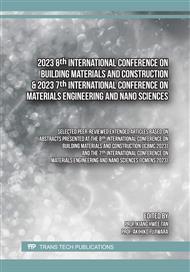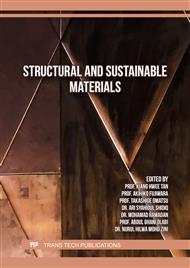p.131
p.137
p.145
p.155
p.161
p.169
p.179
p.197
p.209
Lateral Torsional Buckling Strength Analysis of Single Symmetric I-Beam Section
Abstract:
The common beam sections in the engineering field are mostly double symmetrical I-beams, It’s advantage is that the design and analysis are double symmetric geometry, therefore simpler. The monosymmetric I-shaped section is relatively in line with engineering requirements and material economy, the reason is that the main design basis for the strength of the I-shaped section is the influence of the section geometry on the compression side. This study focuses on different monosymmetric sections, Its area contrast (A) is 1, 1.33, 1.46, 1.5 and 1.99 respectively. The relationship between the ratio of the five section enlarged wing plates and the nominal bending strength (Mn). monosymmetric section is divided into plastic, inelastic and elastic three intervals for analysis and comparison. Area contrast of 1 is bisymmetric section, magnifications from 1.33 to 1.99 are different magnifications for pressure flanges, area contrast 1.99 relative double symmetry area increased by 1.3 times, strength increased by a factor of 1.2 in the plastic zone, the inelastic interval increases by 2.2 times, the elastic range increases by 3.8 times, increasing the compression flange area can increase the strength of the section in the plastic, inelastic and elastic ranges. in this study, the area contrast is analyzed as the 1.46 intensity change point, abrupt slope changes in intensity occur in area contrast to-intensity curves. Through the above analysis method, the study adopts the AISC 2017 specification to analyze the single symmetrical flange section of the I-beam, discuss the strength difference of the enlarged ratio of the compression side, and establish the strength relationship curve of each section, and propose the single symmetrical I-shaped section with the best benefit.
Info:
Periodical:
Pages:
161-166
Citation:
Online since:
October 2023
Authors:
Price:
Сopyright:
© 2023 Trans Tech Publications Ltd. All Rights Reserved
Share:
Citation:



